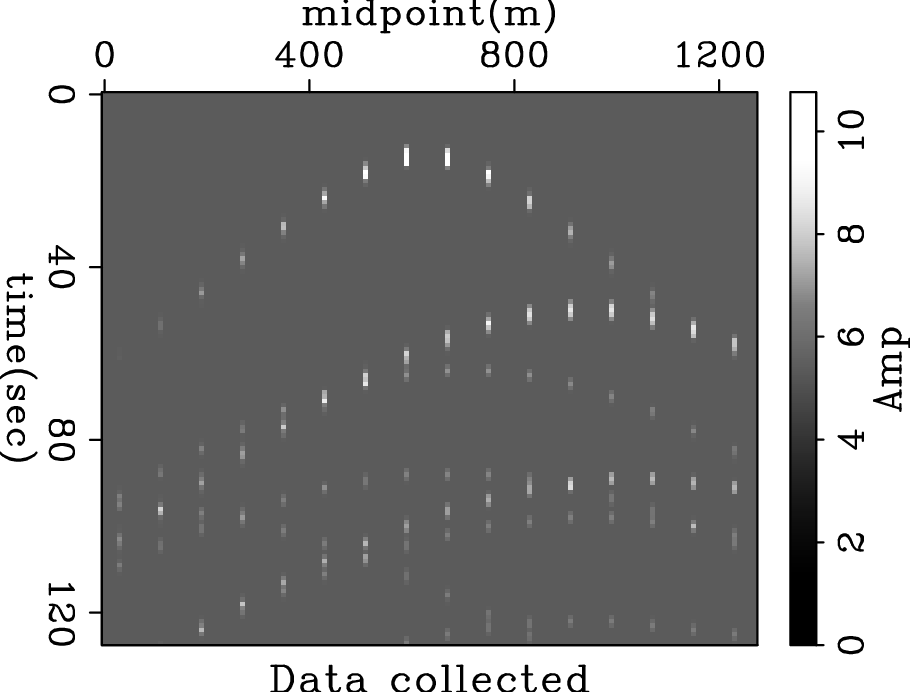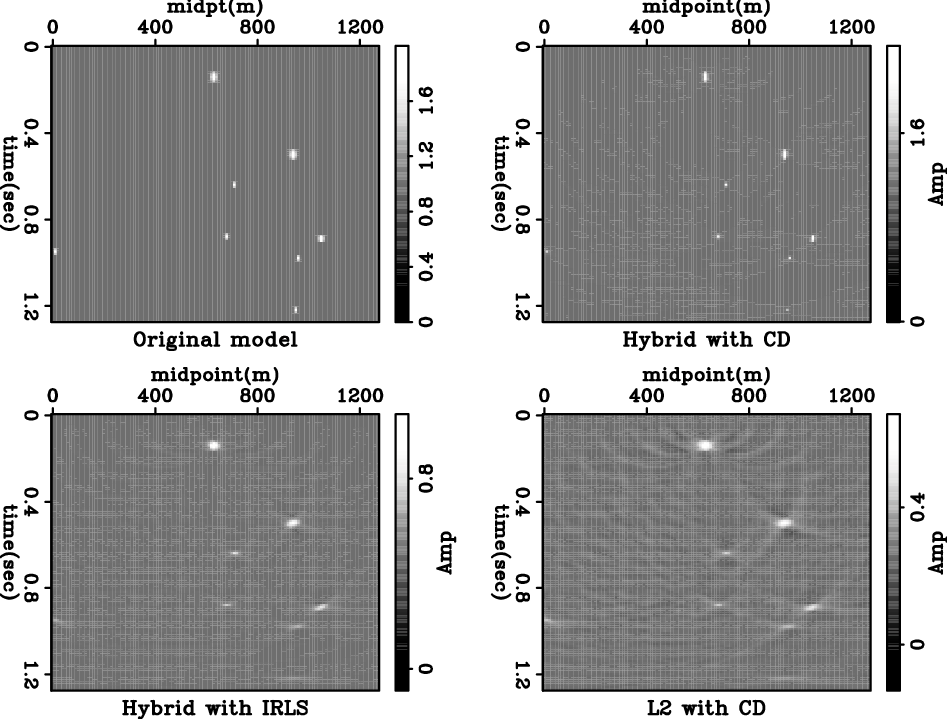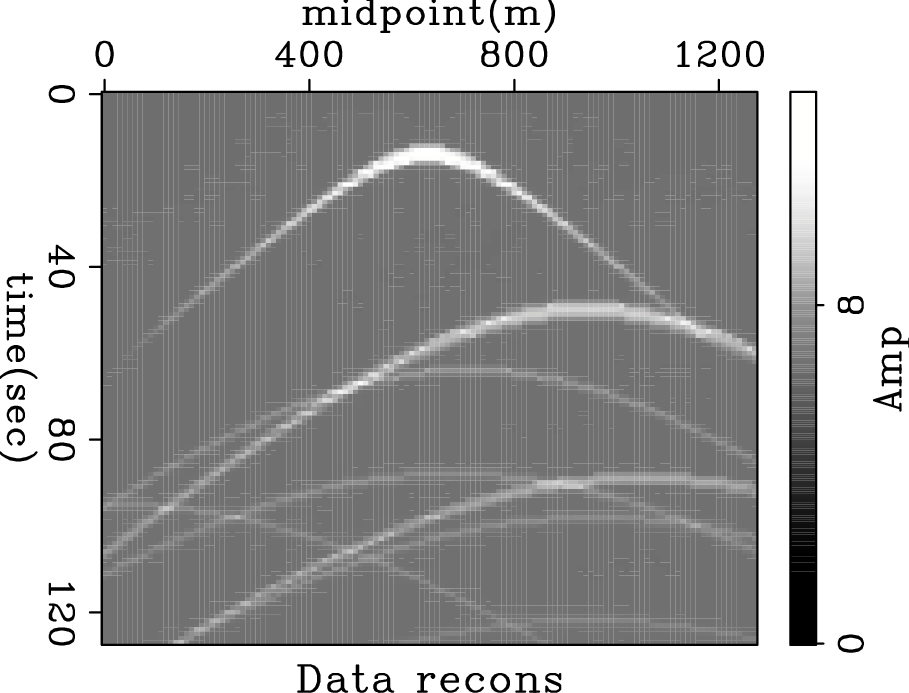|
|
|
|
Geophysical applications of a novel and robust L1 solver |
We formulate the inversion problem as follows:
In field acquisition, data usually have denser sampling
rates in the in-line direction than the cross-line
direction. Therefore, the surface-recorded data are always aliased in
the cross line direction. To illustrate the problem in the cross-line
direction, figure 3 shows an example of highly aliased
hyperbolas.The aliasing makes the inversion problem an
underdetermined problem; therefore, the result of the inversion relies
heavily on the regularization. With the model space sampling being
![]() ,
the sampling of data space is only
,
the sampling of data space is only
![]() . Also note that
some of the
hyperbolas are not symmetric; therefore the tops of the hyperbolas are
shifted.
. Also note that
some of the
hyperbolas are not symmetric; therefore the tops of the hyperbolas are
shifted.
Same as the previous example, we experimented with different solvers: L2, IRLS and hybrid, to compare their results.

|
|---|
|
datasub
Figure 3. Highly aliased hyperbola. Input data for the Kirchhoff inversion. |
|
|

|
|---|
|
show-mod-rand-8
Figure 4. Original model and inversion results by different methods. Top left: original model; Top right: Hybrid result with CD; Bottom left: Hybrid result with IRLS; Bottom right: L2 result with CD. |
|
|
|
datahb
Figure 5. Data reconstructed by the hybrid solver with CD. The CD hybrid solver accurately recovers the original data. Notice the hyperbola with its top at the left edge is well resolved. |

|
|---|---|
|
|
Figure 4 shows the inversion results with different schemes. The results show that the hybrid norm is superior for retrieving the spiky result that resembles the original model the best. Although severely aliased, the inversion result recovers the exact position, the correct size and most of the amplitude. Notice that the CD hybrid solver recovers the very low amplitude spike at the left edge. This promising result suggests that by choosing the regularization properly, we can overcome the aliasing problem in the presence of a sparse model.
Figure 5 shows the reconstructed data from the CD hybrid solver. The original data are accurately recovered. Notice the hyperbola with its top at the left edge is well resolved.
|
|
|
|
Geophysical applications of a novel and robust L1 solver |